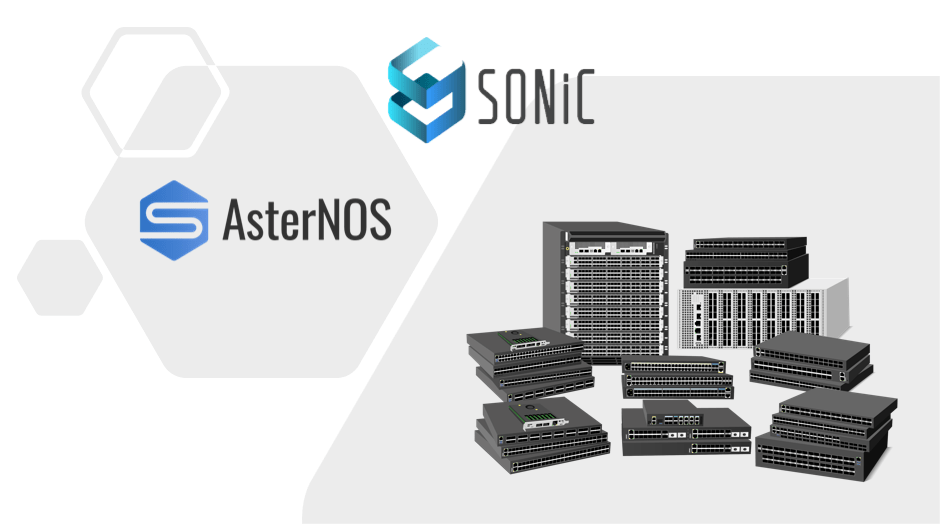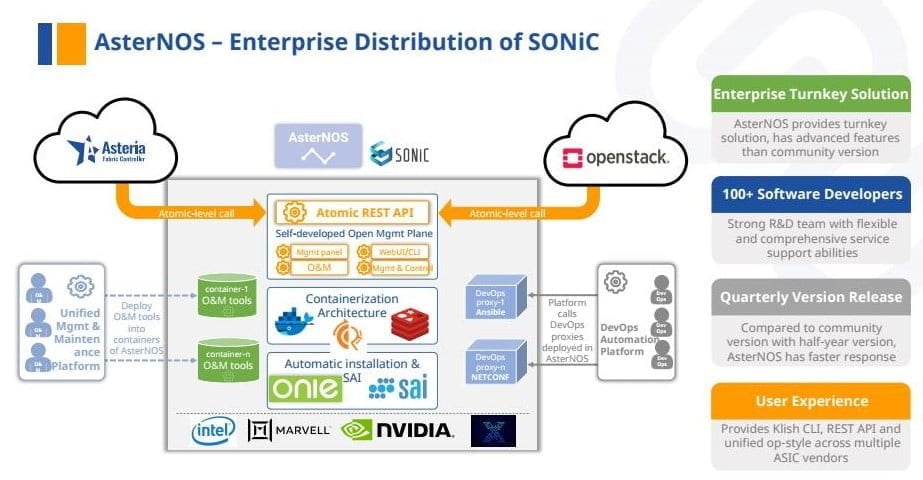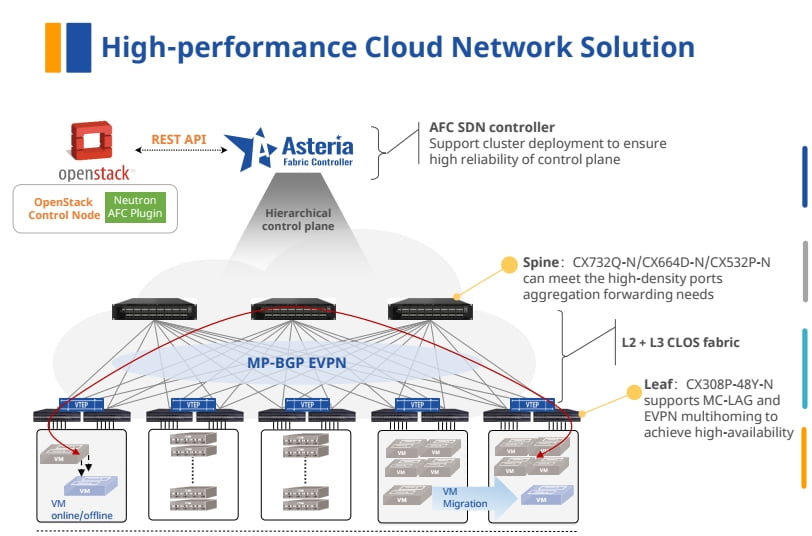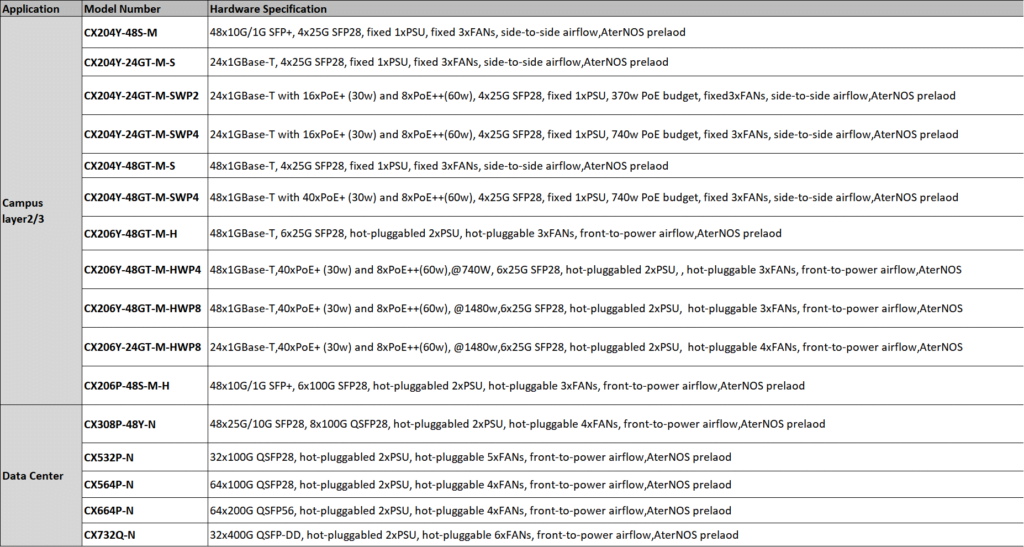As technology advances, the landscape of network architecture continuously evolves to meet the ever-changing demands of businesses. Some service providers and large organizations are actively transitioning from traditional networks to open networking, aiming to reduce costs, enhance flexibility, and improve customer satisfaction. In this article, we will delve into the intricacies of open networking, providing you with a comprehensive understanding to make an informed decision about whether to adopt this innovative approach.
Before delving into the details of open networking, it is essential to differentiate between several key concepts, such as
What is Open-source network, Open network, and SDN (software-defined networking)
Review the article :How Open Source Promotes High-quality Evolution of Open Networking
what is open networking?
Open networking entails the separation of networking hardware devices from software code. It operates on open standards and bare-metal hardware, empowering enterprises to intricately select their equipment, software, and networking operating systems (OS). Consequently, open networking endeavors to furnish organizations with a dynamically flexible, agile, and programmable network. Moreover, by effectively leveraging the division between software and hardware, open networking cultivates an environment of component compatibility, interoperability, and expandability. This affords enterprises greater flexibility and promotes their overall growth and development.
Closed Networking vs Open Networking ?
Traditional networking refers to the conventional approach of networking, where hardware devices and software code are tightly integrated and provided by a single vendor. However, open networking takes a unique path by separating networking hardware devices from software code. This separation allows for increased flexibility and empowers businesses to make choices that best suit their needs.

Traditional Networking Challenges:
- Vendor Lock-in: The traditional networking model often leads to vendor lock-in, as it relies on proprietary hardware and software solutions. This limitation constrains businesses from freely choosing different components or easily switching vendors.
- Limited Customization: Customization options are limited in traditional networking due to the tight integration of hardware and software. Consequently, businesses have to rely on the predetermined features and capabilities provided by the vendor.
- Higher Costs: Traditional networking solutions can be quite expensive due to their reliance on proprietary hardware and software. Upgrades and expansions may require purchasing new equipment exclusively from the same vendor, adding to the overall costs.
- Complex Management: The process of managing traditional networks can be complex and time-consuming, particularly when dealing with multiple vendors or proprietary protocols. Troubleshooting and configuration can become arduous tasks, leading to potential roadblocks.
Open Networking Advantages:
- Flexibility and Choice: Open networking empowers businesses to independently choose equipment, software, and networking operating systems. This flexibility allows for customization and adaptation of networks to meet specific requirements.
- Cost Reduction: Leveraging open standards and bare-metal hardware, open networking potentially reduces costs compared to traditional solutions. It enables businesses to use cost-effective equipment and software alternatives.
- Agility and Scalability: Open networking promotes agility by utilizing open standards and common interfaces, making network management and configuration efficient and streamlined. It facilitates the rapid deployment of new services and the scalability of the network infrastructure.
- Interoperability and Innovation: With open networking, interoperability and component compatibility are fostered. It encourages collaborative efforts and fuels innovation by providing the freedom to experiment with new networking technologies and solutions.
Drawbacks of Open Networking Solutions
- Tackling Complexity: Open networking solutions might seem daunting and challenging compared to traditional networking methods. They often necessitate in-depth knowledge of open network technologies, which could call for supplementary training or recruiting experienced staff.
- Combating Compatibility Issues: Open networking might face potential compatibility problems while integrating with products from different vendors. Customers must ensure that the hardware and software they purchase are compatible, requiring collaboration between hardware &software manufacturers.
- Navigating Evolving Standards: Open networking standards and protocols are always changing, with some even in their infancy. This can give rise to interoperability obstacles and potential compatibility issues amid different components of the network infrastructure.
- Addressing Security Concerns: Open networking might present new security risks and vulnerabilities. The use of open-source software and the capability to modify network configurations heighten the possibility for unauthorized access, data breaches, and other security incidents if not correctly implemented and managed.
- Embracing the Learning Curve: Adopting open networking solutions may demand a learning curve for IT teams familiar with traditional networking approaches. This can lead to extra time and resources spent training staff to ensure a seamless transition to cutting-edge technology.
To overcome these challenges;firstly, select a manufacturer that offers comprehensive services,like Asterfusion can resolving software and hardware compatibility issues directly. Secondly, organizations can invest in training and certification programs to help IT teams manage open networking complexity more easily. These steps will enable you to have a more enjoyable transition from traditional networking solutions to open networking, benefiting from increased flexibility, cost savings, and innovation opportunities.
Asterfusion, A Leading Open Networking Solution Provider
Asterfusion Data Technologies introduces an innovative and cutting-edge solution that offers a fully open network experience. This solution includes highly disaggregated white box switches and bare metal switches equipped with a own enterprise SONiC-based operating system. Designed to meet the evolving needs of data centers, campuses, and service providers, this offering provides lightning-fast speeds ranging from 1G to 400G.

With a team of seasoned professionals from industry giants Cisco and Huawei, Asterfusion brings a wealth of expertise in route and switch development. The company excels in developing its own SONiC-based open network operating system and whitebox hardware, actively contributing to major open-source communities. Their mission is to transform cloud networks through the implementation of whitebox switching technology.
At the core of Asterfusion’s solution is the Asterfusion SONiC Distribution (AsterNOS), a robust and secure variant of SONiC (Software for Open Networking in the Cloud). This turnkey open network solution is designed to be highly compatible and user-friendly, providing a reliable and flexible networking experience. Asterfusion aims to drive an open, scalable, and programmable network design for AI, cloud computing, enterprise data centers, and campus access.

Asterfusion Leaf and Spine Topology for Data Center or CORD

Leaf and spine architecture can effortlessly scale from a few racks with Layer2 fabric to thousands of racks with Layer3 fabric.
The Asterfusion open network switches offer a wide range of choices for server connections, including 1G, 10G, 25G, or 100G, as well as spine network options like 10G, 40G, 100G, and even 400G.
To enhance the network underlay, the folded CLOS fabric provides robust support for SDN, virtualization, and cloud orchestration software alternatives.
Asterfusion Open cloud campus network Topology

- Scale-out spine-leaf architecture with all box switches. Using CX-M series as leaf/spine switches and CX-N series as spine/fabric switches, access users can reach 100k+.
- All layer-3 design eliminates broadcast storm issue, and each terminal is naturally layer 2 isolated from each other by default.
- Single profile template for all leaf switches, simplified delivery with ZTP
- OpenWiFi Compatible Controller to Manage Switches and AP
Asterfusion Open Cloud network Switches Models

Engage with Asterfusion and embrace the future of networking technology!



